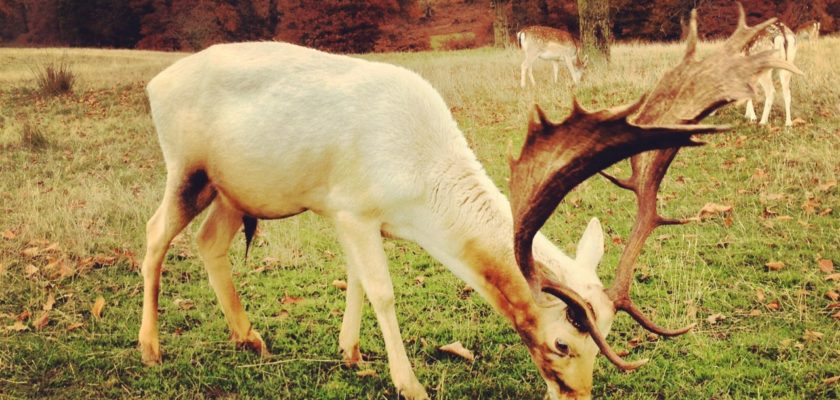Knole is an English country house in the town of Sevenoaks in west Kent, surrounded by a 1,000-acre (4.0 km2) deer park. One of England's largest houses, it is reputed to be a calendar house, having 365 rooms, 52 staircases, 12 entrances and 7 courtyards. It is known for the degree to which its early 17th-century appearance is preserved, particularly in the case of the state rooms: the exteriors and interiors of many houses of this period, such as Clandon Park in Surrey, were dramatically altered later on. The surrounding deer park has also survived with little having changed over the past 400 years except for the loss of over 70% of its trees in the Great Storm of 1987.
Knole Park, the park in which Knole House sits, is a Site of Special Scientific Interest, and hosts the annual Knole Run, a schools cross-country race. It was also used in the filming in January 1967 of the Beatles‘ videos that accompanied the release of “Penny Lane” and “Strawberry Fields Forever”. The stone archway through which the four Beatles rode on horses can still be seen on the southeastern side of the Bird House, which is itself found on the southeastern side of Knole House. The same visit to Knole Park inspired another Beatles song, Being for the Benefit of Mr. Kite! which is based on an 1843 poster advertising Pablo Fanque's Circus Royal, which John Lennon bought in a nearby Sevenoaks antiques shop.

Stag

Doe

White Hart
The house is now in the care of the National Trust; however, the Trust only owns the house and about 43 acres (170,000 m2) of the park. Considerably more than half the house is still home to the Sackville-Wests. Lord Sackville and his family still own the gardens and the rest of the surrounding estate. As a walled garden, Knole's is very large, at 26 acres (30 including the ‘footprint' of the house),[citation needed] and indeed is large enough to have the very unusual — and essentially mediaeval — feature of a smaller walled garden inside itself. It contains many other features from earlier ages which have been wiped away in most country-house gardens: like the house, the garden has not been assiduously kept up-to-date with changing fashions over the centuries. These include clair-voies, a patte d'oie and even some bosquet hedges.

Dead Hart

Lead Bath
Knole House also appears in the 2008 film, The Other Boleyn Girl, along with nearby Penshurst Place and Dover Castle, and more recently in the 2010 film Burke and Hare. In January 2012, the National Trust launched an appeal for £2.7M to restore the house.
The Orangery, a 19th-century feature, left undisturbed behind locked doors for two centuries, was opened to the public by the National Trust in 2010.
Its development as an exhibition space reflects Knole's desire to share more of its own history with the public, to give its community a space to exhibit, and to inspire the artists of today as the house has done for centuries.

The Orangery I

The Orangery II

The Orangery III
via Wikipedia





Comments